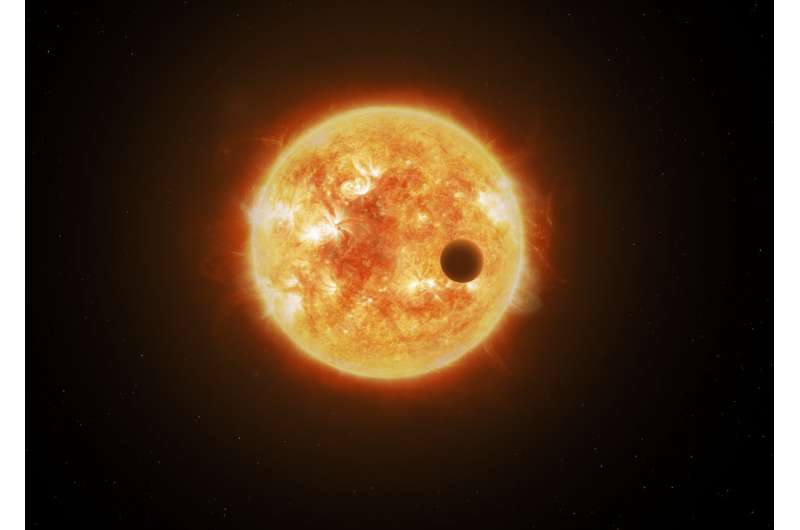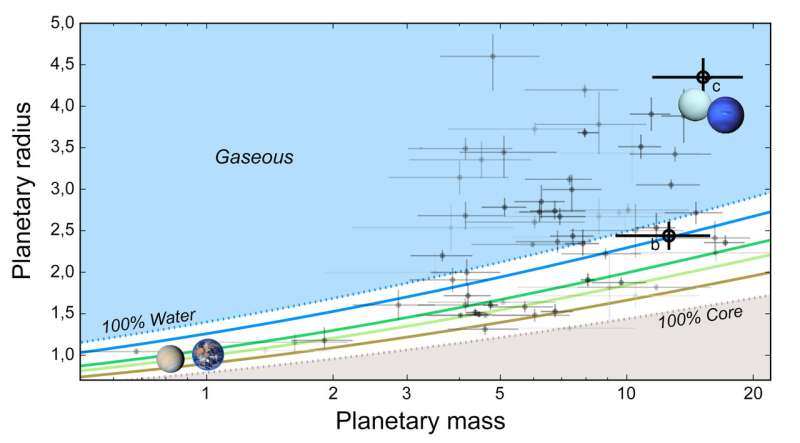Characterization of a water world in a multi-exoplanetary system

A team of astronomers from 11 countries, led by researchers at the Instituto de AstrofÃsica e Ciências do Espaço (IA), were able to determine the precise mass of two small exoplanets orbiting the variable star HD 106315.
These two planets were previously detected by the Kepler satellite (NASA) via the transit method, which allowed researchers to determine the diameter of the planets. HD 106315b has a period of 9,5 days and a diameter of 2,44 times the diameter of the Earth, while HD 106315c has an orbital period of about 21 days, and a diameter 4,35 times the diameter of the Earth.
But to characterize a planet (for example, to determine if it is gaseous or rocky, or whether they have an atmosphere), researchers also need to know the mass of the planet, measured by the radial velocities, so that together with size, they can infer its density.
Susana Barros (IA & University of Porto), the first author of the paper, explains the problem with this star: "The variability of HD 106315 was thought to be a source of too much noise for radial velocity observation, and therefore we couldn't measure the mass of the two planets."
Using data from a large observing program with the HARPS spectrograph (ESO), the IA team estimated the mass of the smaller planet HD 106315 b to be 12,6 times that of the Earth, and the density to be 4,7 g/cm3. For the larger planet, HD 106315 c, the derived mass is 15,2 times that of the Earth, with a density of 1,01 g/cm3. These values indicate that planet "c" has a thick hydrogen-helium envelope, while a detailed investigation of planet "b," using planetary interior models, indicates at up to 50 percent of rocky material and 9—50 percent of water, making it a water world.
Nuno Santos (IA & Science Faculty of the University of Porto), leader of IA's "Towards the detection and characterization of other Earths" thematic line adds: "Thanks to an intensive observation strategy and a sophisticated data analysis method developed by our team, we were able to determine the masses of these two planets and the composition of planet b."
Susana Barros further points out that: "This planetary system showcases the diversity in the composition of planets, and since they transit a bright star, it will be possible to study their atmospheres. With current instruments, it's currently possible to observe the atmosphere of planet c, but for planet b we will need to wait for instruments like the James Webb Space Telescope (JWST), to be launched in 2019."

Probing atmospheres with upcoming new facilities like JWST (NASA) or ESO's Extremely Large Telescope (ELT) will help to better understand the composition of HD 106315 b, since this planet lies in the transition between rocky and gaseous planet composition.
More information: S. C. C. Barros et al. Precise masses for the transiting planetary system HD 106315 with HARPS, Astronomy & Astrophysics (2017).
Journal information: Astronomy & Astrophysics
Provided by Universidade do Porto





















